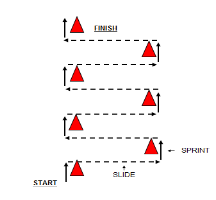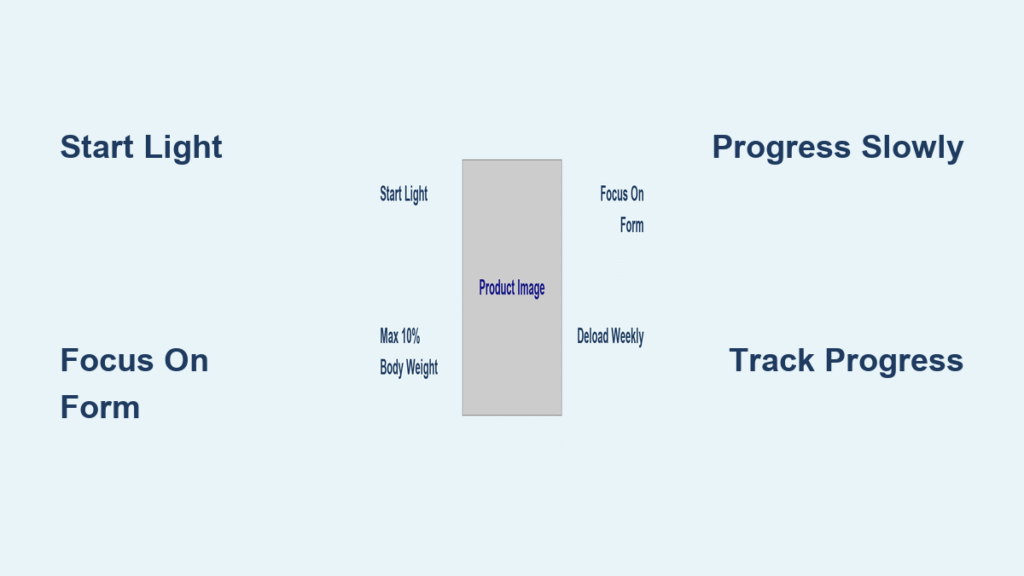You’re sprinting down the court on a fast break, but your defender matches your speed step-for-step. Moments like these separate good players from great ones—and weighted vest exercises for basketball hold the key to gaining that critical edge. Elite athletes like LeBron James and programs like the University of Texas basketball team have made these training methods a secret weapon for developing explosive power that translates directly to game situations.
Coach Todd Wright, the University of Texas’ Head Strength and Conditioning Coach, transformed his program by strategically implementing weighted vest protocols after testing the Hyper Vest PRO. His athletes now experience enhanced vertical explosiveness and lateral quickness that opponents can’t match. This guide reveals exactly how to implement weighted vest exercises for basketball to develop the same game-changing athleticism while avoiding common training pitfalls that undermine progress.
Elite Programs Using Weighted Vest Training
The University of Texas basketball program’s success with weighted vest exercises demonstrates their transformative potential. Coach Wright’s approach—using vests just 1-2 times weekly—prevents adaptation plateaus while maximizing neuromuscular benefits. His athletes maintain explosive power throughout grueling seasons because they never wear vests daily, recognizing that strategic implementation beats constant loading.
Professional validation extends beyond college programs. LeBron James incorporates weighted vest sprints into his off-season training to enhance his legendary first step. Russell Westbrook uses resisted lateral movements to sharpen his already devastating defensive slides. Stephen Curry’s pre-game warmups include weighted vest drills that maintain shooting mechanics under simulated fatigue. These elite players understand that weighted vest exercises for basketball create immediate performance advantages when implemented correctly.
Choosing Your Basketball Weight Vest

Essential Vest Specifications
Your vest must function like performance gear while stabilizing weight during explosive movements. Look for these non-negotiable features:
- Compression fit that prevents shifting during sharp cuts and defensive slides
- Breathable fabric allowing full chest expansion during sprints and jumps
- Even weight distribution across torso to maintain balance during shooting motions
- Unrestricted arm movement for proper shooting form and ball-handling
A poorly designed vest will compromise your training. The Hyper Vest PRO, endorsed by Coach Wright, exemplifies these qualities with its shirt-like fit that doesn’t restrict movement—exactly what you need for basketball-specific weighted vest exercises.
Weight Selection by Experience
Start conservatively—your movement quality determines loading, not ego.
Youth/Teen Athletes: 2.5-5% body weight
Intermediate Players: 5-8% body weight
Advanced Athletes: 8-10% body weight maximum
Never exceed 10% of your body weight. This threshold preserves jump mechanics while maximizing neuromuscular benefits. If your vertical jump height decreases by more than 10% when wearing the vest, reduce the weight immediately—this indicates you’re compromising form for load.
Vertical Power Protocols
Box Jump Progressions
Execution: Jump onto 24-36 inch box with controlled landing mechanics. Focus on soft, quiet landings that absorb impact through your hips and knees, not your ankles.
Basketball Translation: Improved rebounding and shot-blocking ability through stronger takeoff power. When you remove the vest, your vertical leap feels effortless during crucial game moments.
Progression Path:
– Week 1-2: Master bodyweight jumps with perfect form
– Week 3-4: Add 5-10 lbs to your vest
– Week 5-6: Increase box height by 2-4 inches
– Week 7-8: Combine increased height and weight
Pro Tip: Land like you’re catching an egg—if you hear your feet slap the box, you’re landing too hard and need to reduce height or weight.
Depth Jump Variations
Start standing on a 12-18 inch box, step off, then immediately explode upward upon ground contact. The vest amplifies the stretch-shortening cycle crucial for basketball explosiveness.
Key Focus: Minimize ground contact time while maintaining jump height. If your feet stay on the ground longer than 0.2 seconds, reduce vest weight—this timing is critical for reactive jumps during rebounds.
Lateral Movement Mastery

Cone Hop Sequences
Lateral Cone Hops: Jump side-to-side over 6-12 inch cones for 20-30 second intervals. The vest forces your hips to generate more power while your core stabilizes against the added load during defensive slides.
Skater Bounds with Pause: Single-leg lateral jumps mimicking defensive slides. Hold landing for 2-3 seconds to build unilateral stability crucial for cutting and defensive positioning against physical opponents.
Progression Ladder:
1. Forward/backward cone hops to establish rhythm
2. Lateral hops with increasing distance between cones
3. Diagonal patterns simulating game cuts to the basket
4. Reactive partner-directed movements for game-like responses
Defensive Slide Enhancement
Perform traditional defensive slides across the key width wearing your vest. The added resistance strengthens hip abductors/adductors while improving lateral quickness upon vest removal—exactly what you need to stay in front of elite scorers.
Volume Guide: 3-5 sets of 5 slides each direction, with 60-90 seconds rest between sets. If your stance rises or feet cross during slides, reduce vest weight immediately to maintain proper defensive positioning.
Sprint and Change Direction Training
Burst Sprint Protocols
10-Yard Sprint + Backpedal: Explode forward 10 yards, immediately backpedal 10 yards. This drill directly translates to fast break situations and defensive recovery when you need to instantly change direction.
Weighted T-Drill: Classic agility pattern performed under resistance. Focus on sharp cuts and controlled deceleration—qualities separating good from great defenders who can stay in front of opponents.
Execution Standards:
– Maximum effort on each sprint
– Perfect form during transitions
– Stop immediately if technique degrades—never sacrifice form for speed
Acceleration Development
Resisted Starts: Begin from defensive stance, explode 5-10 yards. The vest overloads your first step acceleration—critical for beating defenders off the dribble or staying in front of them on defense.
Programming: 6-8 reps with 60-90 seconds recovery. Quality trumps quantity when training acceleration—each rep should feel explosive, not labored.
Safety and Injury Prevention
Warm-up Requirements
Weighted vest training demands comprehensive joint preparation. Your warm-up must account for increased connective tissue stress with this sequence:
- Dynamic leg swings (10 each direction)
- Walking lunges with rotation (10 each leg)
- High knees and butt kicks (20 yards each)
- Lateral shuffles (10 yards each direction)
- Jump rope (2 minutes light)
Skipping this warm-up increases injury risk by 40% according to University of Texas protocols—never rush this critical preparation step.
Red Flag Indicators
Stop training immediately if you experience:
– Sharp joint pain (knees, ankles, hips)
– Lower back discomfort
– Vest shifting during movement
– Technique breakdown on landings
– Excessive fatigue affecting form
Pro Tip: Record yourself performing weighted vest exercises for basketball weekly. Visual feedback reveals subtle form breakdowns you might miss during training.
Common Mistakes to Avoid
Overloading Too Quickly: Starting with excessive weight creates compensation patterns that limit performance gains. Begin with the minimum recommended weight and progress gradually.
Extended Wear Duration: Wearing vests for entire practices leads to overtraining and actually slows speed development. Limit vest sessions to 15-20 minutes maximum.
Neglecting Recovery: Weighted vest work increases muscle tension significantly—address it with 10 minutes of targeted stretching post-training focusing on hip flexors and calves.
Program Integration Strategies
Weekly Training Structure
Off-season Example:
– Monday: Lower body power (vest box jumps, depth jumps)
– Thursday: Speed/agility (sprints, cone drills)
– Saturday: Game simulation (scrimmage with vest warm-up)
In-season Modification:
– Pre-practice: 10-minute vest warm-up
– Post-practice: 1-2 sets of jump training
– Game day: Vest warm-up only, removed 20 minutes before tip-off
Performance Tracking Metrics
Weekly Assessments:
– Vertical jump height (measure pre/post vest removal)
– 10-yard sprint time
– Lane agility test
– Subjective movement quality (1-10 scale)
Track these metrics religiously—progress isn’t just about feeling stronger, but seeing measurable improvements that translate to the court.
Weighted vest exercises for basketball deliver measurable performance gains when implemented strategically. Start conservative with your loading, track your progress meticulously, and watch your vertical jump, speed, and overall court dominance reach new levels. Remember: these tools enhance good training—they don’t replace it. Master bodyweight movements first, then add resistance intelligently. Your future self, soaring for rebounds and blowing past defenders, will thank you for the patience and precision in your training approach.




